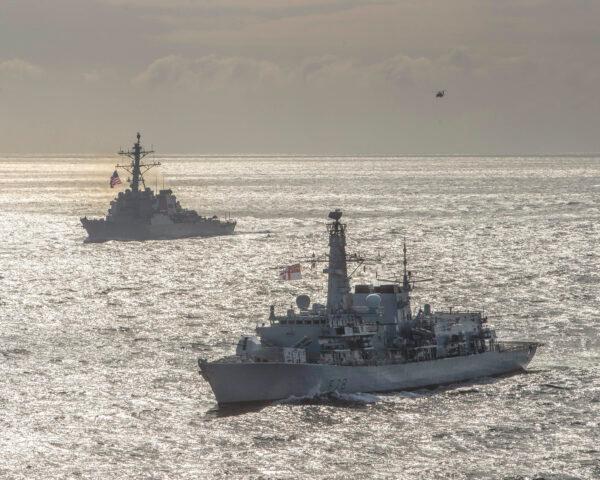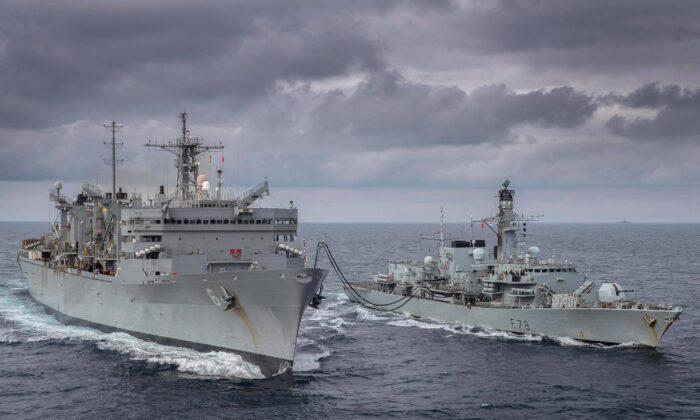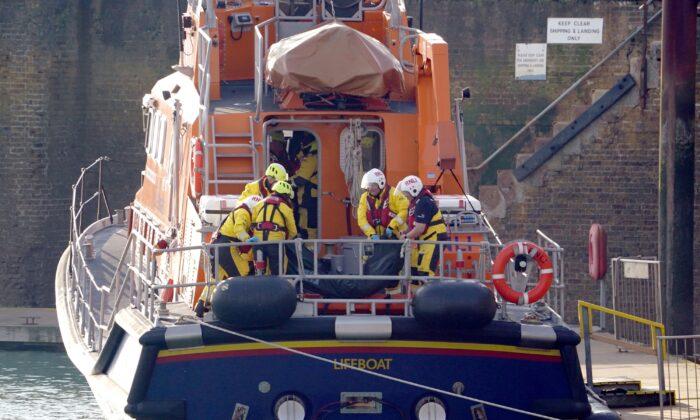The first U.S. Navy ships since the Cold War to sail into the Barents Sea in Russia’s maritime backyard have completed seven days of exercises with a British frigate.
The Barents Sea lies between the Norwegian and Russian coasts in the Arctic.
“Our operations with the UK demonstrate the strength, flexibility, and commitment of the NATO Alliance to freedom of navigation throughout the Arctic and all European waters.”
Three U.S. destroyers entered the Barents Sea on May 4 together with the British Navy ship.
The exercises reflect a growing U.S. strategic interest in the Arctic and also follow a two-year pivot in military strategy to counter Russia and China.
“The notification was made in an effort to avoid misperceptions, reduce risk, and prevent inadvertent escalation,” the statement said.
According to the Navy, the ships are applying lessons learned from recent operations in the Arctic as they try to improve the ability to handle cold weather conditions.

The USS Harry Truman sailed to the Arctic Circle in 2018—the first aircraft carrier to patrol there since the Cold War.
That carrier visit also broke with the previous clockwork cycles of deployment—showcasing a new strategy known as “dynamic force employment.”
“U.S. allies and adversaries know that U.S. forces will be deployed overseas and will respond quickly if there’s a crisis. But day-to-day, they won’t know whether U.S. force deployments are going to happen.”
Russia has been building its military presence in the Arctic alongside infrastructure investments to capitalize on the potential opening up of the frozen northeast passage between the Arctic circle and the mainland.
“There is also a concerted effort to establish a network of air defense and coastal missile systems, early warning radars, rescue centers, and a variety of sensors.”
Russia has been investing in nine nuclear-powered ice-breakers, with Beijing pushing to partner up with Russia in opening up trade routes through the ice.
Beijing has increasingly tried to thrust its way into the Arctic geopolitical stakes, despite having no territorial claim, according to the State Department.
“And as you all probably know, it outlined plans in 2018 to develop a Polar Silk Road, claimed it was a near-Arctic state, and signaled its intention to play a more active role in Arctic governance.”
Ahead of a meeting of the Arctic Council last year, U.S. Secretary of State Mike Pompeo said the United States was ramping up its Arctic presence to keep Beijing in check.
“China’s pattern of aggressive behavior elsewhere will inform how it treats the Arctic,” he said. “Do we want the Arctic Ocean to transform into a new South China Sea, fraught with militarization and competing territorial claims?”






Friends Read Free